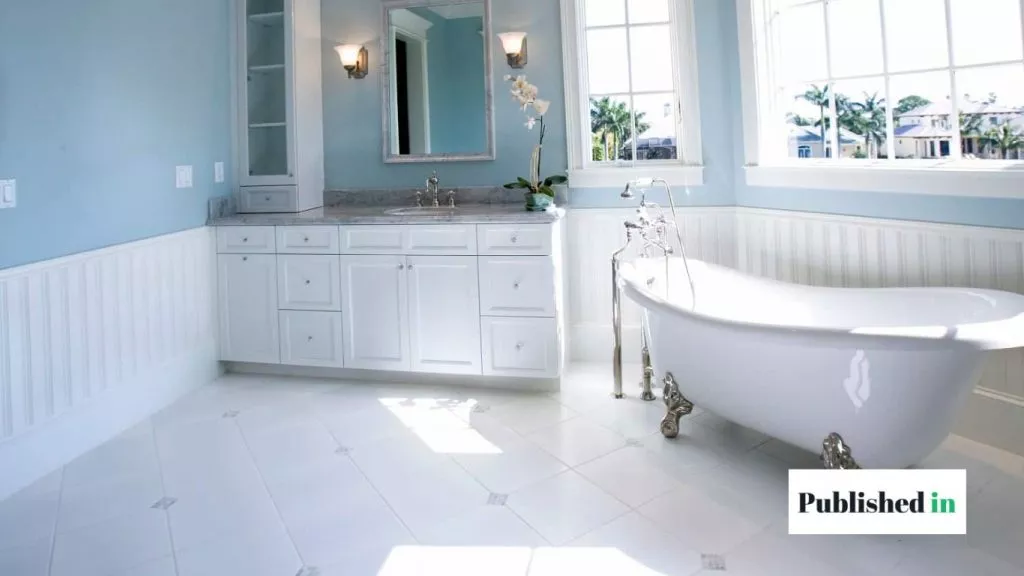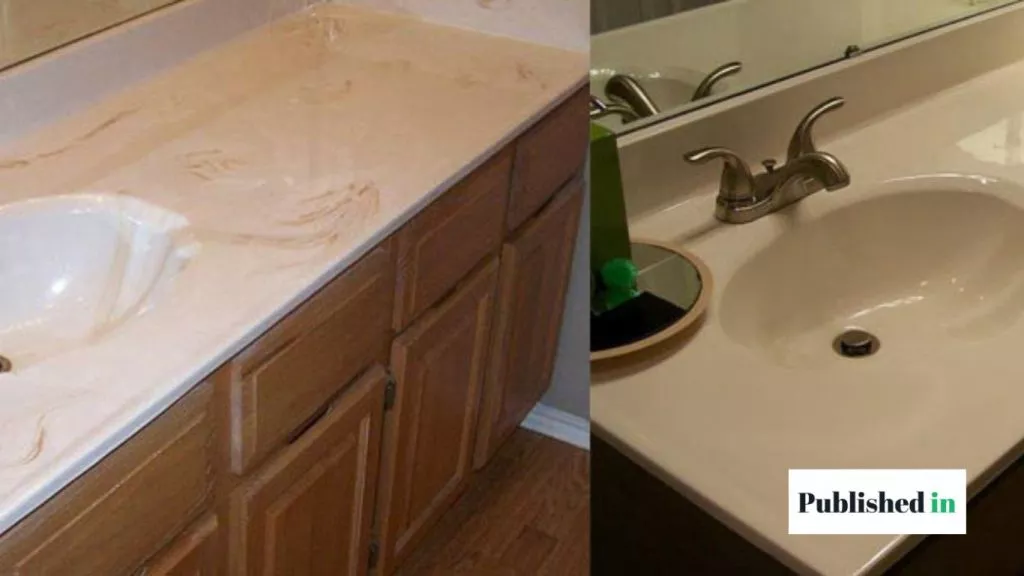Key Takeaways
- Bathtub and countertop resurfacing is a profitable, low-cost business that can be started with minimal investment.
- The process includes market research, acquiring the right skills and tools, and creating an effective marketing strategy.
- Focus on quality service, customer satisfaction, and scaling your business for long-term success.
- Offering additional services can help grow your business and attract more customers.
Introduction: Ready to Dive Into the Bathtub and Countertop Resurfacing Business? Here’s How to Get Started!
Ever looked at an old, dingy bathtub or countertop and thought, “This could really use a makeover”? Well, what if you could turn that idea into a money-making business? Bathtub and countertop resurfacing is one of those industries that’s perfect for those with a passion for home improvement. It’s a high-demand service, with low startup costs and great profit potential.
I remember when I first got into the business—I thought, “How hard could it be? It’s just resurfacing a tub!” Fast forward to a couple of years later, and I’m handling multiple projects a week, working with homeowners, real estate agents, and property managers who need to breathe new life into their old surfaces. It’s satisfying, lucrative, and honestly—way easier than I ever expected to break into.
In this article, I’ll guide you through every step of starting your own resurfacing business. From understanding what resurfacing is to gathering the right tools, marketing, and scaling up—this guide will cover it all. Let’s get to work!

Understanding the Basics of Bathtub and Countertop Resurfacing
Before you jump into the business side, let’s first clarify what bathtub and countertop resurfacing really is. Simply put, resurfacing involves restoring the surface of bathtubs, countertops, and other fixtures to look as good as new without needing to replace them entirely.
Unlike remodeling, which involves removing and replacing entire fixtures, resurfacing works by applying a new finish over the existing surface. It’s cost-effective for homeowners and a quicker solution to making their bathrooms and kitchens look fresh.
What Is Bathtub and Countertop Resurfacing?
Resurfacing works by using a special coating that bonds to the existing surface. It’s like giving a new life to a worn-out bathtub or countertop. The process involves cleaning the surface thoroughly, applying a bonding agent, and then coating it with a durable finish.
Key Differences Between Resurfacing, Refinishing, and Replacing
Replacing: Involves removing and installing new fixtures, which is much more expensive and time-consuming.
Resurfacing: Applies a new coating over the existing surface.
Refinishing: Sometimes used interchangeably with resurfacing, but can also refer to polishing or re-coating.

Step 1: Assessing the Market and Identifying Your Target Audience
To launch a successful business, you need to know your audience. Start by researching the demand for resurfacing services in your area. Here’s the good news: home improvement is always in demand, and resurfacing is often more affordable than replacements, making it an attractive choice for many homeowners.
Researching the Demand for Resurfacing Services
Look for areas with older homes, rental properties, or commercial properties. These are prime spots for resurfacing since many of these spaces have older bathtubs or countertops that could use a refresh without the cost of replacing everything.
Understanding Your Target Customer: Homeowners, Property Managers, and Businesses
Your potential clients could include:
- Homeowners: Homeowners looking to upgrade their bathrooms and kitchens without tearing everything out.
- Property Managers: Managers of rental properties who want to fix up bathrooms and kitchens on a budget.
- Businesses: Hotels, motels, and even restaurants needing quick fixes to maintain their facilities.
Analyzing Competitors and Finding Your Unique Selling Point
Check out other resurfacing businesses in your area. What services do they offer? What are their prices? Use this information to find ways to stand out—maybe you offer faster service, a better warranty, or specialize in eco-friendly coatings.
Step 2: Creating a Solid Business Plan
Now that you have an understanding of the market, it’s time to get organized. A solid business plan is your blueprint for success. It’ll guide your decisions and keep you on track as you start your business.
Defining Your Business Goals and Objectives
What are your goals for the business? Is your aim to operate locally, or do you want to expand regionally? Do you want to be the go-to resurfacing expert in your area? Set clear, achievable goals to measure your progress.
Estimating Startup Costs and Budgeting for Materials, Tools, and Labor
To get started, you’ll need some basic equipment:
- Surface preparation tools (sanders, grinders)
- Application tools (rollers, brushes)
- Chemicals and coatings for resurfacing
Initial costs can range between $2,000 to $5,000 depending on the quality of tools and materials. Be sure to factor in ongoing costs like transportation, marketing, and insurance.
Understanding Licensing, Permits, and Insurance Requirements
Research the necessary business licenses in your area. You may also need insurance to protect your business from potential liability. Don’t skip this step—being properly licensed and insured will give you credibility and protect you in the long run.
Setting Pricing Strategies and Profit Margins
Look at what competitors charge and set your rates accordingly. Resurfacing is usually a cost-effective alternative to replacements, so keep your pricing competitive. Aim for a markup of 30-50% on the materials you purchase.
Step 3: Acquiring the Necessary Skills and Training
While you don’t need to be a contractor to resurface bathtubs and countertops, having the right skills is crucial. You can take courses or get hands-on experience before you begin.
Getting Certified or Trained in Resurfacing Techniques
Some resurfacing businesses offer training programs that teach the basics of surface preparation, coating application, and finishing. This is a great option if you’re just getting started and need structured guidance.
Online vs. In-person Training Options
Both options have their pros and cons:
- In-person training: Hands-on, real-world experience.
- Online courses: Convenient, can be done at your own pace.
Step 4: Purchasing the Right Equipment and Materials
The right tools are essential for delivering quality work. Here’s a list of the must-have equipment:
- Sanders, grinders, and polishing tools
- Paint sprayers or rollers for smooth application
- Protective gear (masks, gloves, goggles)
- High-quality resurfacing materials (epoxy or urethane-based coatings)
Step 5: Marketing Your Resurfacing Business
Once you’ve got your tools and skills in place, it’s time to start attracting clients. Your marketing strategy will play a big part in the growth of your business.
Building a Strong Brand Identity for Your Business
Create a memorable brand, complete with a logo and business name that reflects the quality and professionalism of your services. Branding is important for building trust with potential customers.
How to Create an Effective Website and Online Presence
Having an easy-to-navigate website is a must. Include before-and-after photos, testimonials, and a clear call to action (CTA). Make sure to optimize your site for local search terms like “bathtub resurfacing [your city].”
Social Media Marketing Tips for Local Exposure
Platforms like Instagram and Facebook are perfect for showing off your work. Post photos and videos of your resurfacing projects, and offer tips or advice. Make sure to use local hashtags to increase visibility.
Networking with Contractors and Real Estate Agents
Building relationships with contractors, real estate agents, and property managers can help you get repeat business. These professionals often work with clients who need affordable solutions for upgrading their properties.
Step 6: Setting Up Your Business Operations
Now, let’s get into the nitty-gritty of running the day-to-day operations.
Organizing Your Business Structure: Sole Proprietorship, LLC, or Corporation?
Decide whether you want to operate as a sole proprietor, an LLC, or a corporation. An LLC offers more protection and can be a better choice for long-term success.
Managing Scheduling and Client Communication
Use scheduling software to keep track of your appointments and projects. Make sure you’re always prompt in responding to client inquiries and follow up with customers after a job is complete.
Setting Up Payment Systems and Invoicing Methods
Make sure you have a reliable payment system in place, like PayPal or a credit card processor. You can also use invoicing software to make your business look more professional and keep track of payments.
Step 7: Hiring and Managing a Team (If Applicable)
If you plan to scale your business, you may need to hire additional help.
When to Hire Additional Help: Contractors vs. Full-Time Employees
You can hire contractors on a project-by-project basis to avoid the hassle of paying full-time employees. However, if your business grows quickly, full-time employees may be necessary.
Essential Skills and Qualities to Look for in Resurfacing Technicians
Look for workers with hands-on experience, attention to detail, and good communication skills. It’s also essential that they are familiar with safety standards and know how to use resurfacing equipment.
Frequently Asked Questions
- How much money can I make with a bathtub and countertop resurfacing business?
The potential earnings can vary depending on your location, expertise, and the size of your client base. Typically, a bathtub resurfacing job can range from $250 to $500, while countertop resurfacing can cost between $300 to $600. As your business grows and you secure more clients, you can expect your income to increase. Many small businesses in this field earn a steady income, and some can generate $50,000 to $100,000 annually as they expand.
- Do I need special certification to start a resurfacing business?
While certification is not mandatory in all areas, it can give you an edge in the market by proving your expertise and professionalism. Some training programs offer certifications that can help you gain credibility with customers. It’s also important to ensure you have the proper business licenses, insurance, and any required permits in your area before starting.
- How long does it take to resurface a bathtub or countertop?
The time it takes to resurface a bathtub or countertop depends on the condition of the surface and the complexity of the project. Typically, resurfacing a bathtub takes about 4 to 6 hours, and countertops can take anywhere from 6 to 8 hours. However, curing time is essential, so you’ll want to leave the surface untouched for 24 to 48 hours after the work is completed.
- What’s the difference between resurfacing and refinishing a bathtub?
The terms “resurfacing” and “refinishing” are often used interchangeably, but they can have subtle differences. Resurfacing typically involves applying a new coating or finish over the existing surface to restore its look. Refinishing can refer to both resurfacing and restoring the original material, often involving polishing or re-coating rather than a complete surface change. The process can vary depending on the service provider.
- How do I find clients for my resurfacing business?
Finding clients starts with a strong online presence. Having a professional website and active social media pages will help attract potential customers. You can also use local SEO strategies to ensure your business shows up in local search results. Networking with real estate agents, property managers, and contractors who regularly deal with older properties can be a great source of referrals. Don’t forget to ask satisfied customers for reviews and recommendations to grow your client base.
- What tools do I need to get started in bathtub and countertop resurfacing?
Here’s a list of essential tools you’ll need:
Sanders and grinders for surface preparation
Paint sprayers or rollers for applying the resurfacing coat
Surface cleaning agents
Bonding agents to ensure a secure finish
Protective gear such as masks, gloves, and goggles
High-quality resurfacing materials like epoxy or urethane-based coatings
Having the right tools ensures that you deliver professional results and maintain safety during the process.
Summary
Starting a bathtub and countertop resurfacing business is an excellent opportunity for anyone interested in home improvement. By researching your market, acquiring the right skills and tools, and developing a solid marketing plan, you can build a profitable business. The key is to focus on customer satisfaction and quality service while expanding your network and scaling your operations over time.






GIPHY App Key not set. Please check settings